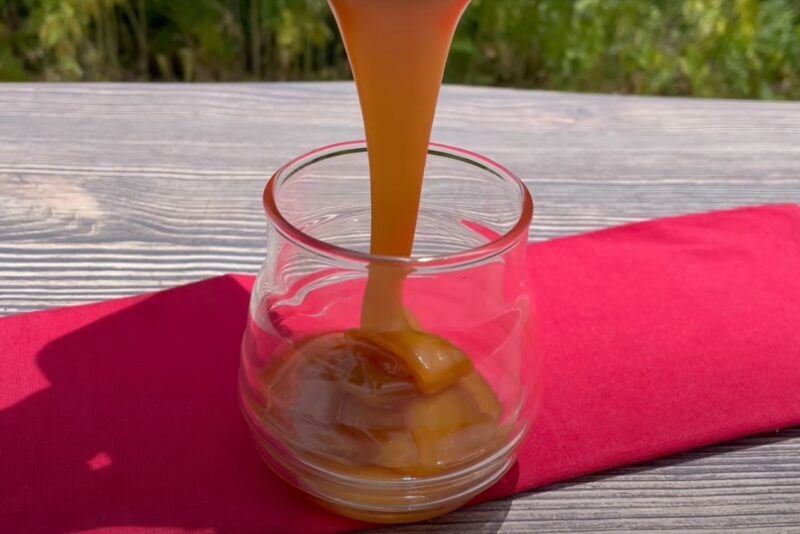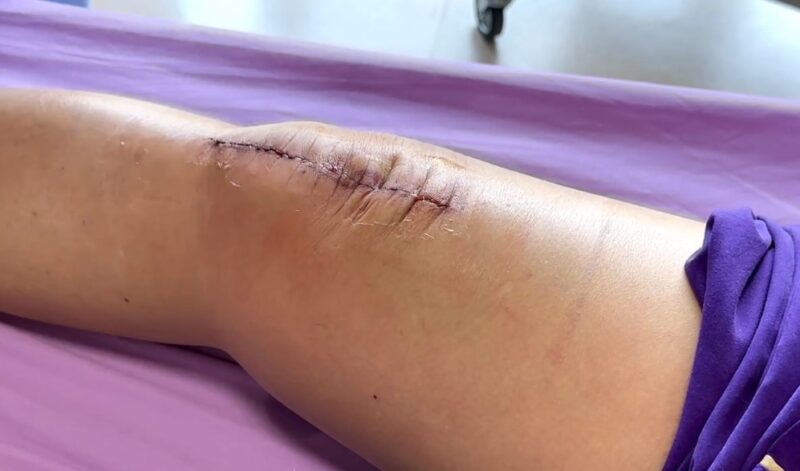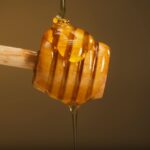Honey with tea, toast, apples and oatmeal – that all sounds normal and delicious. Honey on wounds, though? It may sound a little out of the ordinary, but honey has actually helped wounds heal for thousands of years. While there are plenty of advanced healing tools available today, honey’s antibacterial properties and unique pH balance still make it a helpful treatment for certain wounds.
Key Takeaways
- Diverse Types of Honey for Healing: Medical-grade, Manuka, Gelam, Tualang, and sterilized honey each offer unique benefits in wound care, ranging from strong antibacterial properties to aiding in tissue regeneration and inflammation reduction.
- Healing Properties of Honey: Honey’s acidic pH and natural sugar content draw moisture from tissues, reducing swelling and preventing bacterial spread, making it an effective natural wound healing agent.
- Effectiveness Across Various Wounds: Honey is proven beneficial for treating a range of wounds, including burns, infected surgical wounds, boils, diabetic foot ulcers, and non-healing wounds, by maintaining a moist environment and fighting infection.
- Application Guidelines: Honey should be applied to the dressing rather than directly on the skin, and in the case of deep wounds, filling the wound bed with honey before dressing can be effective. Always practice sterile techniques during application.
- Professional Guidance Recommended: While honey is a potent natural remedy for wound care, it is essential to consult healthcare professionals for personalized advice, particularly in severe cases or when there are pre-existing conditions like allergies or sensitive skin.
Here’s what to know about using honey for healing wounds:
The Type of Honey
Wound-care professionals typically use medical-grade honey for healing chronic wounds, although Manuka honey is also an effective choice. According to Healthline, Manuka honey has a unique compound that kills bacteria. Gelam and Tualang honey are also sold as healing types of honey. Additionally, there are options that have been sterilized by gamma irradiation that are safe for use on wounds.
Medical-Grade Honey:
- Use: Primarily utilized in professional wound care settings.
- Benefits: It is specially processed and sterilized to be free of contaminants, making it safe for wound application. Its high sugar content helps draw moisture out of the wound, which can assist in killing bacteria and reducing inflammation.
Manuka Honey:

- Use: Widely recognized for its healing properties, especially in chronic wound management.
- Benefits: Contains a unique compound called methylglyoxal (MGO), which has strong antibacterial properties. This makes it effective in combating infection, promoting tissue regeneration, and reducing wound odor.
Gelam Honey:
- Use: Gaining popularity in natural wound care treatments.
- Benefits: Known for its anti-inflammatory and antibacterial properties. It is believed to enhance the wound healing process, particularly in burns and superficial wounds.
Tualang Honey:
- Use: Often used in alternative medicine for wound care.
- Benefits: Rich in antioxidants and has potent anti-inflammatory properties. It is thought to be effective in accelerating wound closure and promoting the repair of damaged tissues.
Sterilized Honey (Gamma Irradiated):
- Use: Suitable for medical use, especially in environments where sterility is crucial.
- Benefits: Sterilization through gamma irradiation ensures the honey is free from any spores or microbes, making it safe for application on open wounds. It retains the therapeutic properties of honey, such as promoting moist wound healing and having antibacterial effects.
The Healing Properties
A literature review published in the journal Wounds highlighted several healing benefits of honey, including an acidic pH that promotes healing by encouraging the blood to release oxygen. The sugar in honey also naturally draws water from damaged tissues, which reduces swelling and prevents bacteria from spreading. This process is further promoted by honey’s antibacterial effect on the wounded skin.
The Types of Wounds

Research shows that honey has a powerful healing effect on burns and infected surgical wounds. Healthline further noted that honey can help heal boils, diabetic foot ulcers and non-healing wounds.
Burns:
- Details: These include all degrees of burns, from minor superficial burns to more serious deeper burns.
- How Honey Helps: Honey helps maintain a moist wound environment, which is crucial for burn healing. Its antibacterial properties also prevent infection in the vulnerable burned area.
Infected Surgical Wounds:
- Details: These are wounds resulting from surgical procedures that have developed infections.
- How Honey Helps: Honey’s natural antibacterial properties combat infection, and its anti-inflammatory action helps reduce swelling and pain, promoting faster healing.
Boils:
- Details: Boils are skin infections that start in hair follicles or oil glands and develop into red, painful lumps.
- How Honey Helps: The application of honey can help draw out infection and accelerate healing, reducing the size and discomfort of boils.
Diabetic Foot Ulcers:
- Details: Chronic wounds often found in individuals with diabetes, typically located on the feet.
- How Honey Helps: Honey can stimulate the healing process while providing a protective barrier against bacteria, which is particularly important for people with diabetes who are at increased risk of infection.
Non-Healing Wounds:
- Details: These are wounds that fail to heal through the typical stages of the healing process, often due to underlying conditions like poor circulation or weakened immune systems.
- How Honey Helps: Honey can invigorate the healing process in these stalled wounds by promoting tissue regeneration, reducing inflammation, and fighting infection.
The Application

Always wash your hands and be careful to work with sterile supplies to prevent infection when handling a wound. It helps to apply the honey to the dressing rather than directly on the skin, as the substance can be relatively messy. As an exception, Healthline suggested filling deep wound beds with honey before applying the dressing. Change the dressing as necessary, continually applying the honey until the wound heals.
Remember that you should check with your doctor before using honey as a treatment method. Especially in severe wound cases, you’ll want to talk to a medical professional for recommendations on the amount of honey, type of dressing and application methods.
FAQ
Is honey safe for all skin types?
While honey is generally safe, individuals with sensitive skin or allergies to bee products should use it cautiously or consult a healthcare provider first.
Can honey be used on wounds in children?
Yes, but it’s advisable to consult a pediatrician first, especially for infants and young children.
How long does it take to see results from honey treatment?
The healing time varies depending on the wound type and severity. Generally, improvements may be noticed within a few days to a week.
Are there any side effects of using honey on wounds?
In rare cases, honey can cause allergic reactions or irritation. It’s important to monitor the wound for any adverse reactions.
Can honey be for other treatments?
Honey can be used for other treatments, especially is good in for face skincare.
Does the shelf life of honey affect its healing properties?
Honey has an indefinite shelf life if stored properly, but its medicinal properties are best when the honey is fresh and properly processed.
Can honey heal internal wounds?
Honey is primarily used for external wounds. Internal use of honey for healing purposes should be discussed with a healthcare professional.
Final Words
Embracing the natural healing powers of honey not only connects us to an ancient tradition of medicinal knowledge but also aligns us with cutting-edge practices in contemporary wound care. This remarkable substance, born from the intricate work of bees and nature, offers a unique, effective solution for a range of wound types, from minor cuts to more serious ulcers.
Its versatility and efficacy remind us of the incredible potential that lies in natural remedies, bridging the gap between traditional wisdom and modern science. Honey’s role in wound healing is a testament to the enduring power of natural substances in enhancing our health and well-being.







